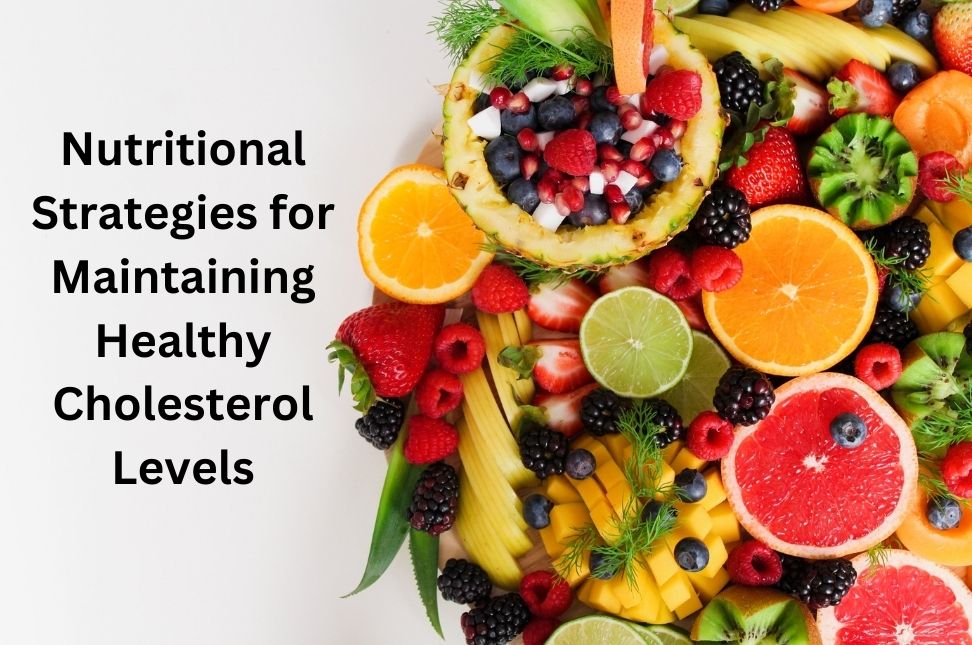Maintaining healthy cholesterol levels is vital for a strong heart and overall well-being. Cholesterol is a fatty substance that, when elevated, can clog arteries and increase the risk of heart disease. In this detailed article, we will provide a comprehensive guide to nutritional strategies for managing cholesterol levels and promoting heart health.
Cholesterol is an essential component of our body’s functions, playing a pivotal role in various physiological processes. However, excessive cholesterol levels, particularly LDL (low-density lipoprotein) cholesterol, can lead to atherosclerosis – the buildup of fatty deposits in your arteries. Over time, this condition can restrict blood flow and increase the risk of heart disease, heart attack, and stroke. Fortunately, by making deliberate dietary choices, you can manage your cholesterol levels and protect your heart.
Understanding Good vs. Bad Cholesterol:
Before we dive into dietary strategies for maintaining healthy cholesterol levels, it’s important to grasp the distinction between “good” and “bad” cholesterol. Cholesterol is transported in your bloodstream by lipoproteins. Low-density lipoprotein (LDL) cholesterol is often referred to as “bad” cholesterol because it tends to deposit cholesterol in artery walls. In contrast, high-density lipoprotein (HDL) cholesterol is considered “good” cholesterol because it transports cholesterol away from artery walls to the liver for excretion.
1. The Role of Fiber:
Dietary fiber, primarily soluble fiber, has a significant impact on cholesterol levels. Soluble fiber binds to cholesterol molecules in the digestive tract, preventing their absorption into the bloodstream. By incorporating fiber-rich foods like oats, barley, beans, fruits, and vegetables into your diet, you can effectively lower LDL cholesterol.
2. Healthy Fats:
The type of fat you consume can significantly influence your cholesterol levels. Unsaturated fats, including monounsaturated and polyunsaturated fats, have been shown to lower LDL cholesterol. Foods rich in these fats include avocados, nuts, seeds, and olive oil. By replacing saturated fats and trans fats with healthy fats in your diet, you can promote better cholesterol profiles.
3. Sterols and Stanols:
Plant sterols and stanols are compounds naturally found in certain plants. They bear a striking resemblance to cholesterol and can compete with cholesterol for absorption in the intestines. As a result, incorporating sterol and stanol-enriched foods, such as fortified margarine and some spreads, can lead to decreased LDL cholesterol levels.
4. Omega-3 Fatty Acids:
Omega-3 fatty acids, primarily obtained from fatty fish like salmon, mackerel, and trout, have a multifaceted impact on heart health. They not only lower triglycerides (another type of fat in the blood) but also reduce the risk of blood clots and stroke. Omega-3s can also contribute to better cholesterol profiles by increasing HDL cholesterol levels.
5. Plant Sterol-Enriched Foods:
Plant sterol-enriched foods, such as certain brands of orange juice and margarine, are designed to provide an additional dose of sterols that can interfere with cholesterol absorption. Consuming these products can be a practical way to lower LDL cholesterol levels.
Conclusion:
In conclusion, maintaining healthy cholesterol levels is an attainable goal with the right dietary choices. By understanding the role of dietary fiber, incorporating healthy fats, utilizing plant sterols and stanols, consuming omega-3 fatty acids, and embracing plant sterol-enriched foods, you can effectively manage your cholesterol levels and reduce the risk of heart disease. A heart-healthy diet is a key component of your journey to better cholesterol profiles and a stronger heart.




